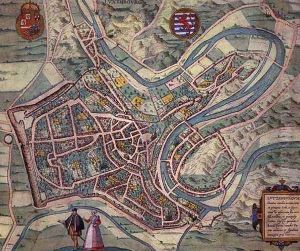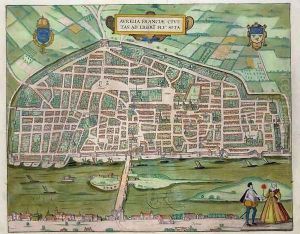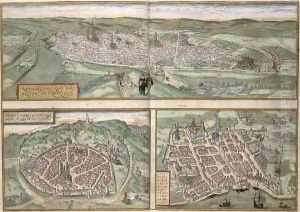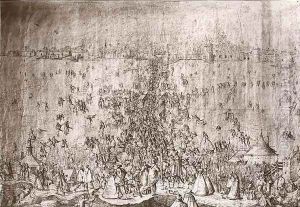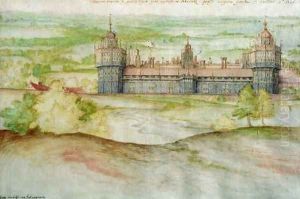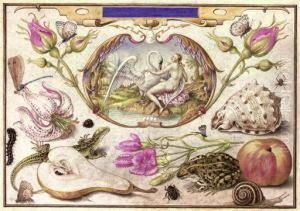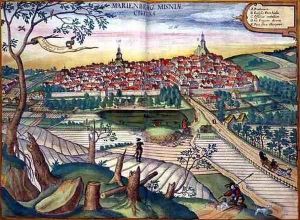





Map of Marienburg from Civitates Orbis Terrarum
-
About Reproduction
Discover the allure of art with our faithful reproduction of "Map of Marienburg from Civitates Orbis Terrarum", originally brought to life by the talented Joris Hoefnagel. Unlike posters or prints, our hand-painted oil painting breathes an unique sense of depth and texture into your space. Every detail, every stroke, and every texture is meticulously recreated, paying the perfect homage to Joris Hoefnagel and his artistic vision.
Owning this piece is more than just decoration - it's a statement of your refined taste in art. Let the vibrant colors and intricate details of this replica serve as a daily reminder of the beauty in our world. Elevate your decor and appreciate the richness of art with our replica of this masterpiece.
-
Painting Description
The "Map of Marienburg" is a notable work from the "Civitates Orbis Terrarum," which is considered one of the most important works in the history of urban cartography. The "Civitates Orbis Terrarum," or "Cities of the World," was a collection of city maps and views that was produced and published from 1572 to 1617. The map of Marienburg, created by Joris Hoefnagel, is a detailed representation of the city known today as Malbork, located in Poland. This city was famous for its castle, which was the headquarters of the Teutonic Knights and is now a UNESCO World Heritage Site.
Joris Hoefnagel (1542–1601) was a Flemish artist, known for his miniature paintings, illuminations, and cartographic works. His contribution to the "Civitates Orbis Terrarum" was significant, as he was responsible for many of the exquisite illustrations that accompanied the maps, bringing to life the urban landscapes of the 16th century with a high level of detail and artistic finesse.
The "Map of Marienburg" is particularly important as it captures the city at a time when it was a hub of political and military power in the region. The map is not only a geographical representation but also a historical document, reflecting the architectural and urban planning styles of the period. It provides historians and art enthusiasts with valuable insights into the city's layout, structures, and the daily activities of its inhabitants at the end of the 16th century.
As an integral part of the "Civitates Orbis Terrarum," the "Map of Marienburg" is a testament to the collaborative effort of cartographers, artists, and publishers of the time. The atlas itself was the result of the work of Georg Braun, a canon of Cologne Cathedral, who was the editor, and Franz Hogenberg, an engraver and publisher, who were the primary creators of the work. The "Civitates" was intended to complement Abraham Ortelius's "Theatrum Orbis Terrarum," the first modern atlas, and together these works provided one of the most comprehensive views of urban life in the late Renaissance.
Today, the "Map of Marienburg" remains a valuable piece for scholars studying cartography, art history, and the history of urban development. It is also a sought-after collector's item for those interested in antique maps and prints. The map's intricate detail and historical significance continue to draw admiration from audiences around the world.
-
Lead Time & Shipping
When you order this oil painting replica, it typically takes 2-3 weeks to paint. If the artwork is more complex, it might need a little more time to ensure the best quality. Once it's ready, we'll send you a photo for your approval. After you give the green light, we'll ship it to you for free.
-
Return & Refund
We believe in the quality of our hand-painted oil painting reproductions, and your satisfaction is our priority. If for any reason, you are not completely satisfied with your purchase, we offer a 45-day return policy. You can return your artwork within 45 days of receipt and receive a full refund. Please note that the artwork must be returned in the original packaging and in the same condition as it was received.





